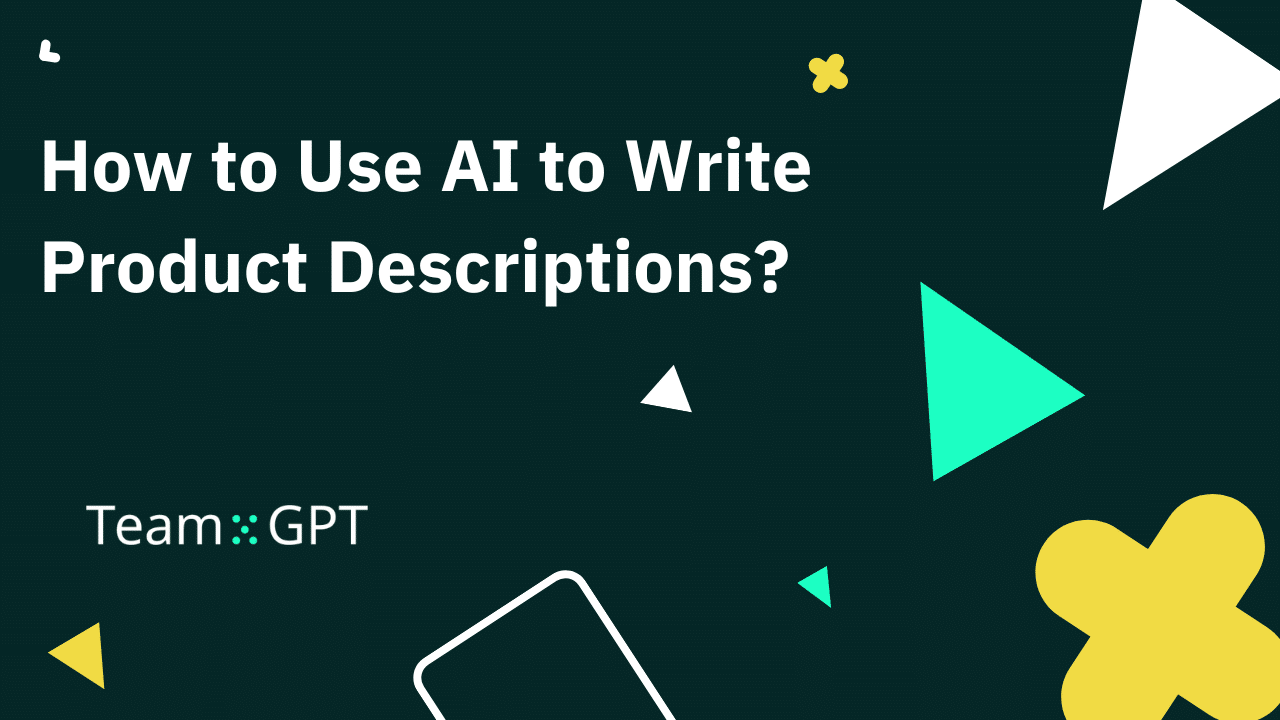If you’re in the e-commerce industry, writing product descriptions is an essential part of your day-to-day operations.
They help increase your e-store's visibility and improve the overall customer experience.
However, crafting compelling product descriptions can become tedious—and it only gets worse as your business grows.
The solution? AI, of course.
Leveraging AI enables you to write accurate, SEO-optimized, and compelling product descriptions on a large scale in seconds.
In this article, I’ll show you exactly how to write a killer AI product description for any and every item in your store, helping you optimize your product descriptions for conversions in no time.
Ready? Let’s go!
What Are the Benefits of Using AI for Product Descriptions?
Using AI product descriptions instead of regular, human-crafted ones has a wide range of benefits for your business.
Let’s explore some of the key ones:
1. Time and cost efficiency
The first advantage of using AI for generating product descriptions is definitely the fantastic efficiency boost it provides.
AI can generate descriptions with lightning speed, saving lots of time compared to manual writing.
This is particularly valuable for businesses with extensive product catalogs, where producing unique descriptions for each item could be time-consuming and costly.
However, to make the most of AI, you must prompt your AI engine of choice the right way and feed it all the relevant info regarding your product and your target audience.
The best way to achieve this is to use agile and flexible AI tools that can learn your preferences and needs and adjust to them on the go.
As a result of this approach, you’ll ensure that the product descriptions you get are delivered quickly and optimized for conversions.
2. Brand consistency across products
With AI, businesses can maintain a uniform tone and style across all product descriptions, helping reinforce brand voice and ensuring that descriptions align with the company's overall messaging strategy.
This is especially useful if you have a large product catalog or sell a wide range of different products but still want to maintain a consistent brand image across your entire offering.
One key benefit of using Machine Learning algorithms is that they can be trained to deliver the exact output you need, ensuring that every product description is perfectly aligned with your brand voice.
3. SEO optimization
A product description is good only if it ensures that your products will be visible in SERPs and enables easier on-page navigation for improved customer experience.
This is why many AI tools are designed to integrate SEO best practices, including keywords, readability, and search intent, enhancing product visibility online.
As a result, AI can suggest or automatically include relevant keywords to boost search rankings and improve your chances of attracting and converting more potential customers.
4. Personalization
AI can help tailor product descriptions to specific audiences or segments, making it easier to appeal to various customer needs.
Some AI tools can generate alternative versions for A/B testing, helping identify which description performs best for conversion.
For instance, in Team-GPT, you can fork AI chats, allowing you to create two separate versions of product descriptions fit for different audience segments or for A/B testing.
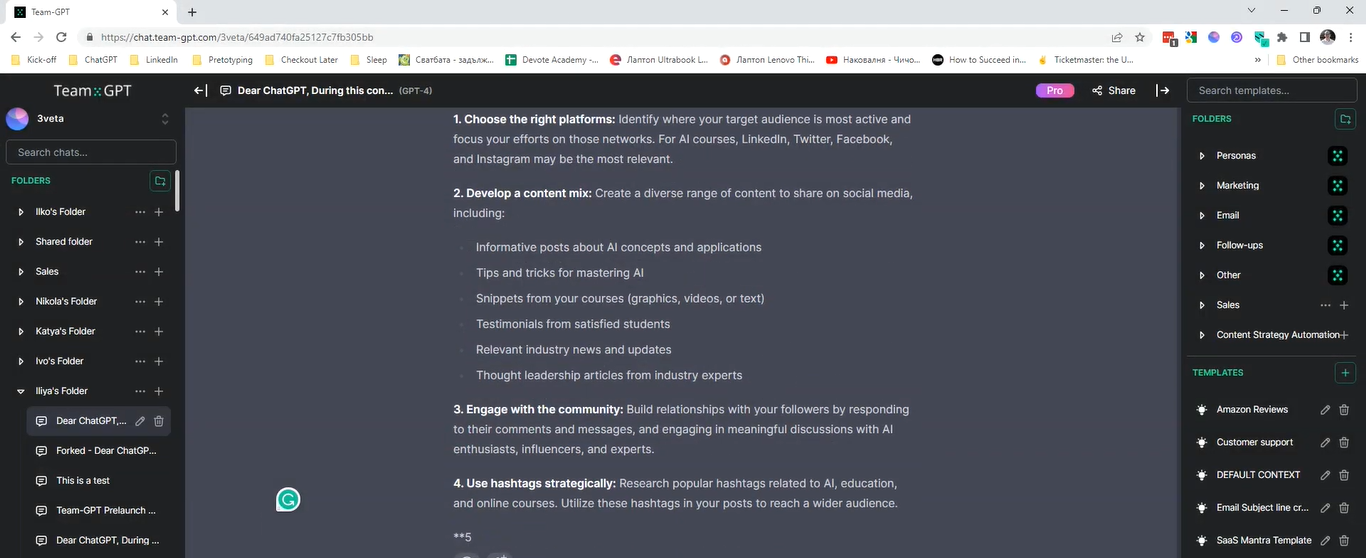
This way, you can also easily tailor content to different platforms and their specific requirements, such as length, language, and context, enabling you to tackle multichannel marketing without breaking a sweat.
5. Scalability
For businesses that are scaling or rapidly expanding their product range, AI can efficiently handle the increased demand for descriptions.
What it would take human writers hours, AI can handle in minutes or even seconds, making it easy to keep up with the content needs of a growing inventory.
Which AI Tools Are Best for Writing Product Descriptions?
With so many AI-powered tools fit for writing AI product descriptions out there, it can’t hurt to quickly review some of the best ones for e-commerce businesses.
1. Team-GPT

Team-GPT is a model-agnostic AI-powered platform that lets your entire team chat with any AI engine you may need.
This kind of flexibility and collaboration options make it ideal for e-commerce businesses looking to tailor their AI solution to their unique needs and business objectives.
Some of Team-GPT’s features that e-commerce users find to be most useful include:
- Collaborative AI - This enables your whole team to work together on AI-powered projects, with each team member contributing with their unique prompts, ideas, expertise, and point of view.
- AI Pages - This lets you generate, edit, and polish all kinds of content for various purposes, including product descriptions, while ensuring it’s SEO-optimized.

- Chat forking - This way, you can test and explore various product description variants for different audiences or platforms without disrupting the original chat.
- Prompt library - You can use some of the ready-made prompts or save custom ones your team uses the most, enabling easy accessibility and ensuring a consistent tone of voice across product descriptions.

One of the best things about Team-GPT, however, is its versatility.
This means you can use it for much more than just generating optimized AI product descriptions on scale.
You can also leverage it to create entire marketing campaigns, craft highly converting CTAs, optimize your overall brand messaging for conversions, and much more.
Pricing
Team-GPT has two pricing plans:
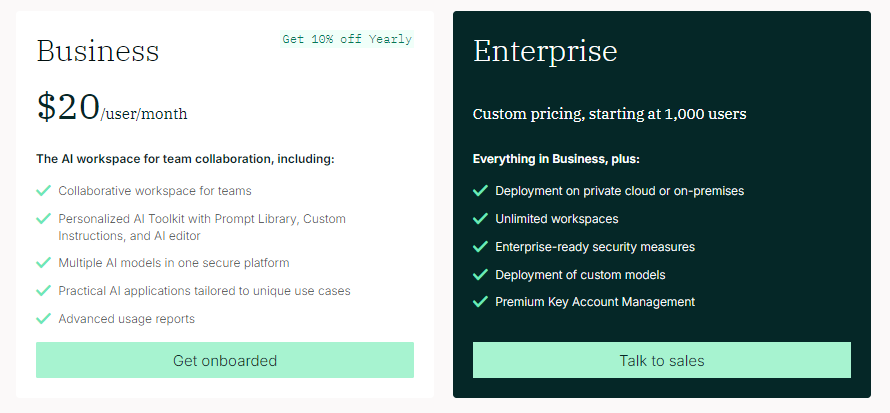
- Business: $20 per user per month, built for small to mid-sized companies, includes:
- Collaborative workspace.
- Personalized AI Toolkit with Prompt Library, Custom Instructions, and AI editor
- Multiple AI models in one secure platform.
- Advanced usage reports, and more.
- Enterprise: Custom pricing, starting at 1,000 users, built for enterprise companies, includes:
- Everything in Business.
- Deployment on private cloud or on-premises.
- Unlimited workspaces.
- Enterprise-level security measures.
- Using custom AI models and more.
2. Jasper.ai
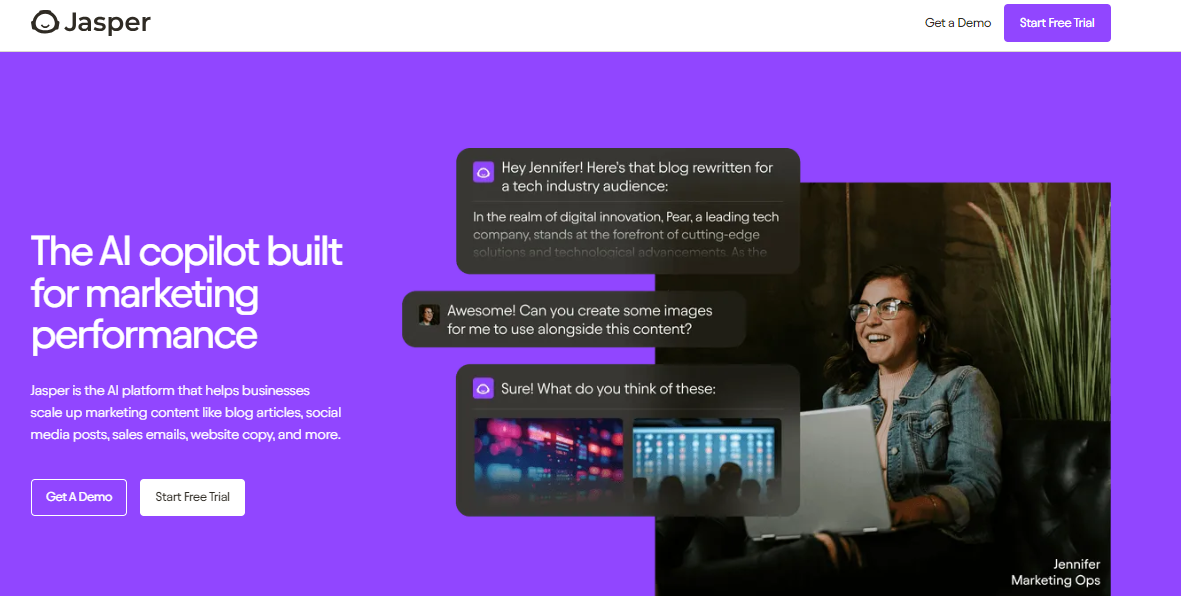
Jasper.ai is a popular AI-powered marketing tool with some nifty options for e-commerce businesses.
Although it’s not as flexible and versatile as Team-GPT, it can help you create solid product descriptions aligned with your brand tone and image thanks to:
- Jasper AI Image Suite - This lets you create and edit images to go with your product descriptions by using natural language prompts.
- Brand Voice - This feature ensures that every product description you generate is aligned with your brand voice.
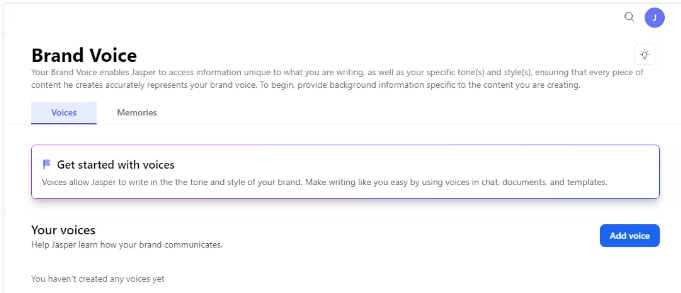
- Chrome extension - This feature allows you to generate and edit AI content aligned with your brand anywhere on the web, including your e-store.
Pricing
Jasper.ai has 3 pricing plans:
- Creator: $49 month/seat (1 user only)
- Pro: $69 month/seat (up to 5 users)
- Business: Custom pricing
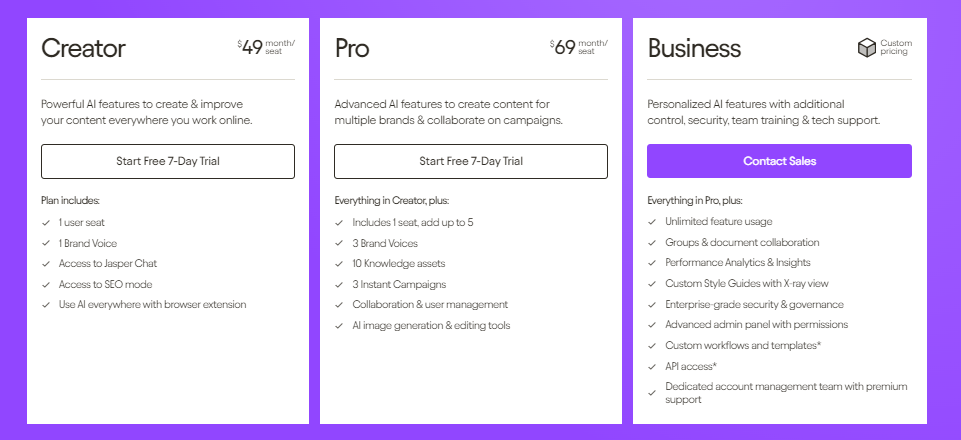
Its Creator and Pro plans have 7-day trials, so you can try them on for size before subscribing.
3. Hypotenuse.ai
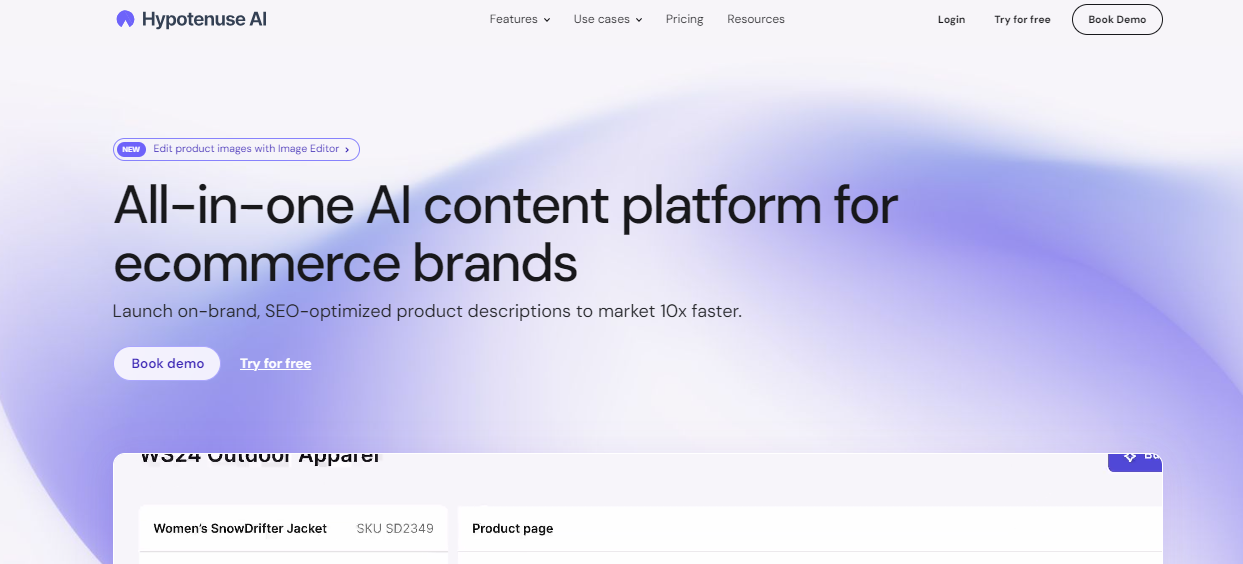
Hypotenuse.ai is a designated e-commerce AI writer and writing assistant that helps you create content optimized to generate more leads and conversions.
Some of its best features include:
- SEO monitoring for e-commerce - This way, you can track search performance and optimize visibility across search engines.
- Product data enrichment - This lets you automate cleaning, standardizing, and enriching your data in bulk to improve product discoverability and enhance user experience across levels.
- Bulk content generator - This enables you to create product descriptions, meta descriptions, and more at scale while ensuring that each piece of content is unique, SEO-optimized, and aligns with your brand voice.
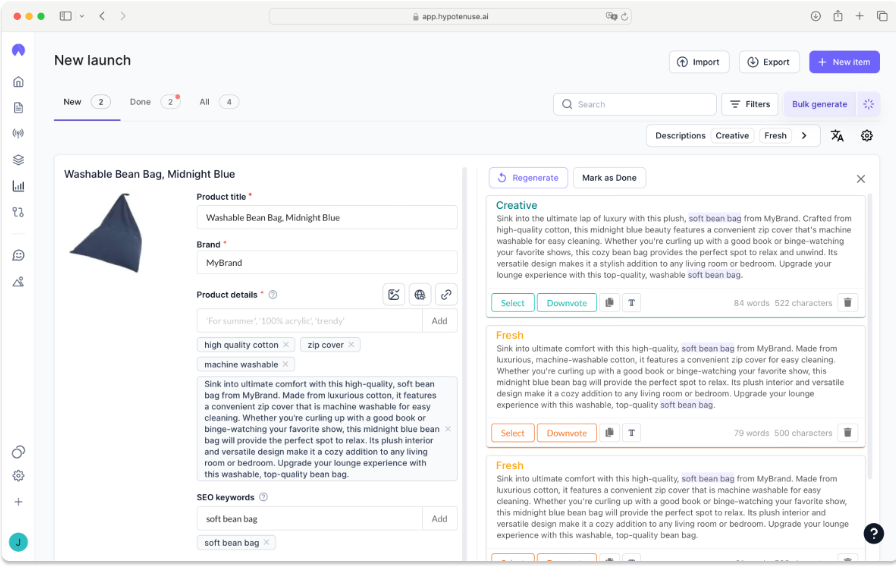
You should remember that, unlike the previous two tools, Hypotenuse.ai has a pretty limited use case, as it can be used strictly for e-commerce content.
Pricing
Hypothenuse.ai has three pricing plans:

- Basic: $150/month, includes 1 seat, product description generator, 20+ languages, and access to 20+ other ecommerce content types.
- Ecommerce Pro: Starts from $500/month, includes 5 seats, everything in Basic + SEO optimized product descriptions, bulk image editor, product enrichment from web crawling and images, and more.
- Ecommerce Custom: Custom price, custom number of seats, includes everything in Ecommerce + product page SEO monitoring, custom description formatting, content gap identification, and more.
Good Examples of Using AI for Product Description
An increasing number of businesses, including industry giants such as Walmart and Amazon, are using AI to write product descriptions.
Let’s look at some examples of well-crafted product descriptions to get a better idea of what you can get AI to do.
1. Walmart
It’s no wonder that big businesses like Walmart leverage AI for crafting product descriptions. The very size of its product catalog—and the frequency at which it changes—requires speed and efficiency without compromising quality.
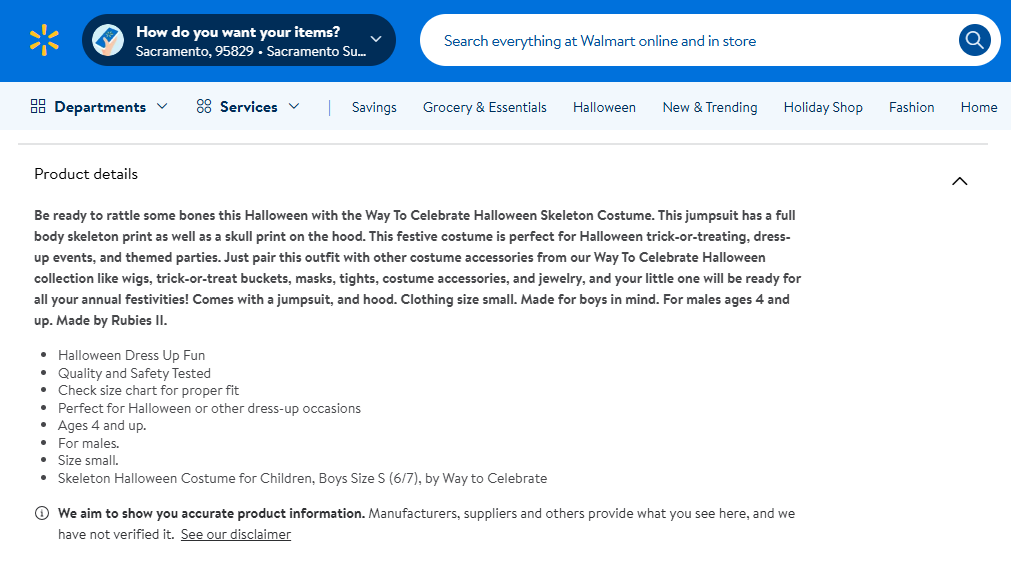
This is the perfect example of an SEO-optimized product description that keeps a casual tone while explaining what you get from the product.
As you can see, it covers all the details essential for a prospective customer, including:
- Purpose.
- Age.
- Size.
- Gender, and more.
2. Amazon
Another retail giant, Amazon, is known for having a diverse suite of AI-powered services, so it’s no surprise that it and many sellers there use AI-generated product descriptions.
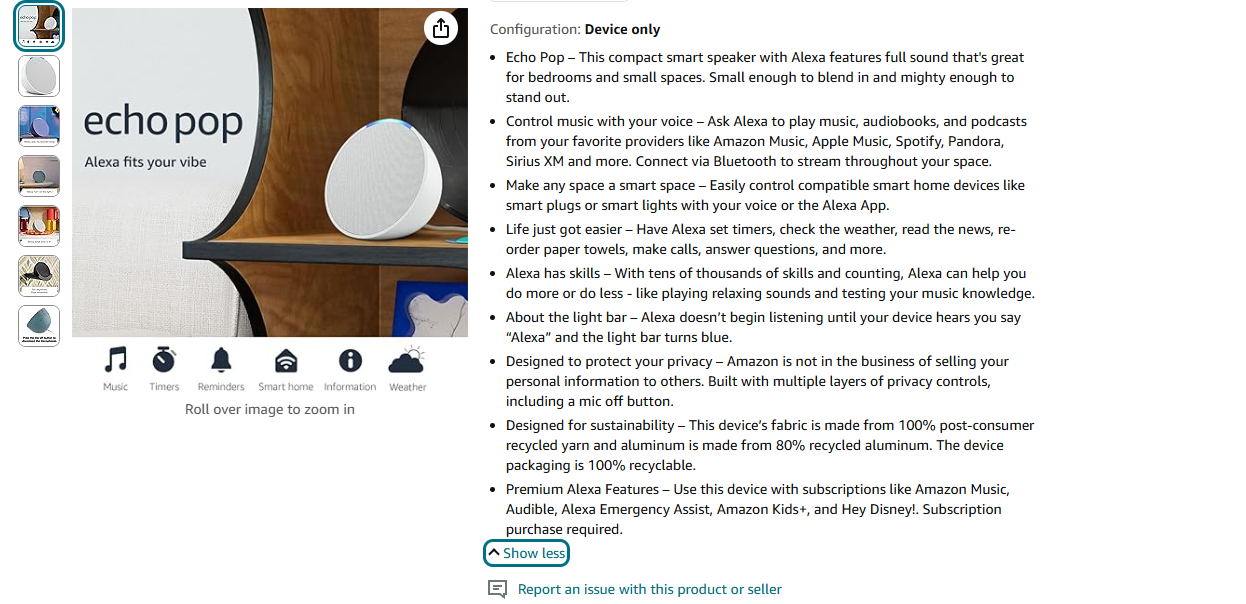
In this example, the product description is designed as a bulletin list of the product’s key features and unique selling points.
Listing product features like this boosts visibility and helps potential customers easily find all the details they need to make a decision.
3. iHeartRaves
This is another retailer with a broad product catalog and a wide variety of categories, meaning that AI is a very welcome hand in writing high-quality product descriptions.
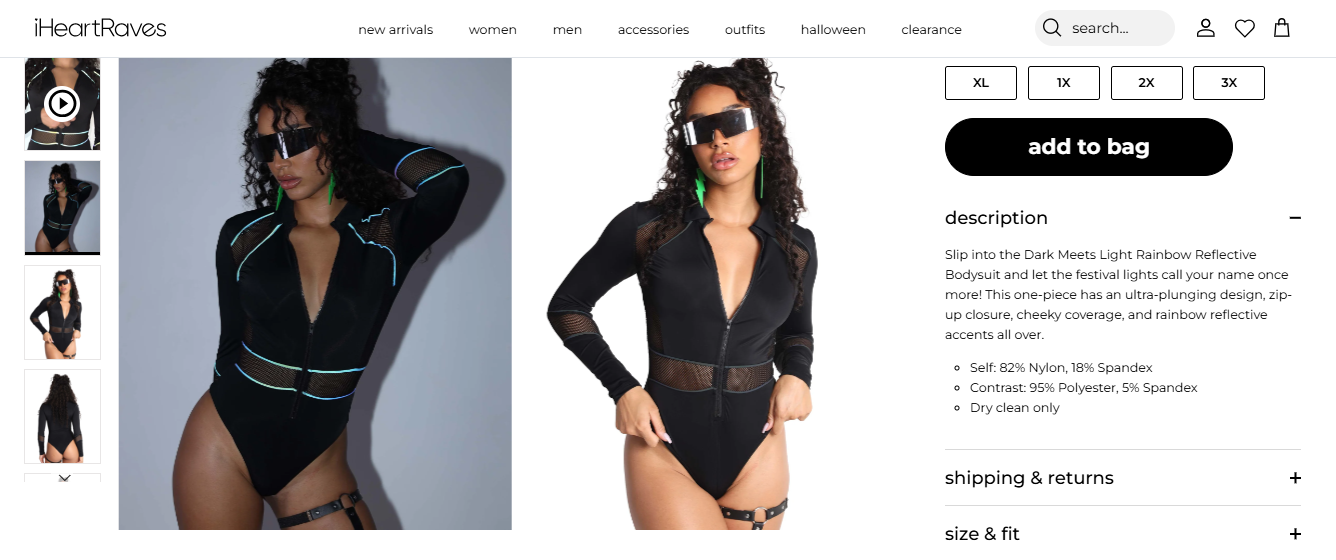
Its product descriptions are short and punchy but never fail to explain exactly what you get with each product.
So, how do you craft equally good product descriptions tailored to your brand and products?
Here are some tips to help you start:
- Choose the right AI tool - Not all AI tools are designed equally. Look for tools that offer specific e-commerce features, like SEO optimization, customization options, and the ability to integrate with your platform. The tools I suggested above might be a good starting point.
- Define your brand voice first - Before generating descriptions, set a consistent tone and style that aligns with your brand identity. Most AI tools allow you to specify a tone (e.g., friendly, professional, luxury) to ensure the content sounds like your brand. With Team-GPT, for example, you can save custom prompts tailored to your brand voice and reuse them for optimal results.
- Incorporate SEO keywords - Research the keywords your target customers use and incorporate them into the AI prompts. Specify relevant keywords directly when generating descriptions to ensure the content aligns with search intent and improves visibility on search engines. Some tools have SEO built-in, meaning they could take care of this bit for you, too.
- Refine your prompts - The quality of your prompts often determines the quality of the output. Start with simple prompts and refine them on the go to include product features, benefits, and target keywords. For example, instead of just “women’s winter coat,” try “women’s winter coat with water-resistant fabric, perfect for extreme cold weather.” Good AI tools will learn with you on the fly, meaning that, in time, they’ll be able to generate high-converting descriptions without too much human intervention.
- Focus on benefits over features - AI tools often generate descriptions that focus solely on features, but conversions are often driven by highlighting benefits. Make sure to include prompts that focus on how the product will improve or enhance the customer’s life.
- Review and edit outputs - AI-generated descriptions are a starting point. Human review is crucial to refine descriptions for clarity, grammar, and brand fit. Also, ensure that details (like sizes, colors, or materials) are correct and up-to-date. In Team-GPT, for instance, the whole team can work on tweaking and improving product descriptions and any other marketing content in real-time.

What Are the Limitations of Using AI for Product Descriptions?
The foundation of good AI use is being aware of its limitations and potential downsides so you can tackle them head-on and ensure that the output you get is high-quality.
Here are some of the things you should pay special attention to:
- Lack of creativity and nuance - While AI can produce grammatically correct and SEO-optimized text, it often lacks the creative flair that makes product descriptions compelling. AI-generated descriptions may come across as generic or machine-like, making it harder for unique products to stand out. Make sure your marketers add their own touch to these product descriptions to humanize them and make them more appealing to customers.
- Difficulty understanding complex products - If you’re selling highly technical or specialized products, AI may struggle to capture the intricate details or context that knowledgeable human writers can. If a product needs nuanced descriptions or specific terminology, AI may produce descriptions that are overly simplified or inaccurate.
- Over-reliance on keywords - AI descriptions that are optimized for SEO can sometimes be overly focused on keywords, leading to keyword stuffing or awkward phrasing. This can result in descriptions that feel unnatural or promotional, decreasing customer trust.
- Limited customization - While some AI tools offer customization options, they may not be able to personalize descriptions for niche audiences or reflect brand nuances as well as a human writer. For instance, an outdoor brand with a rugged, adventure-focused image might need descriptions with specific vocabulary that AI could miss. Focus on tools that can learn with you and allow for lots of customization.
- Risk of losing originality - Since many businesses use similar AI tools for product descriptions, there’s a risk that products across different brands may start sounding alike. This can create a sense of “sameness” in the market, making it difficult for a brand to differentiate itself through product copy alone.
Final Takeaways
AI is here to stay, meaning that businesses that fail to adopt it in time will inevitably fall behind the competition - and this goes for e-commerce businesses as well.
So, the right time to start implementing AI to write product descriptions, optimize landing pages, craft marketing strategies, etc., is right now.
Team-GPT could be an excellent starting point if you:
- Are a team of 2+ people.
- Want to optimize your e-commerce business with the power of AI.
- Need an AI tool that’s agile and customizable.
- Want to enable your whole team to collaborate on all kinds of projects.
Book a demo now and find out if Team-GPT is the right match.

